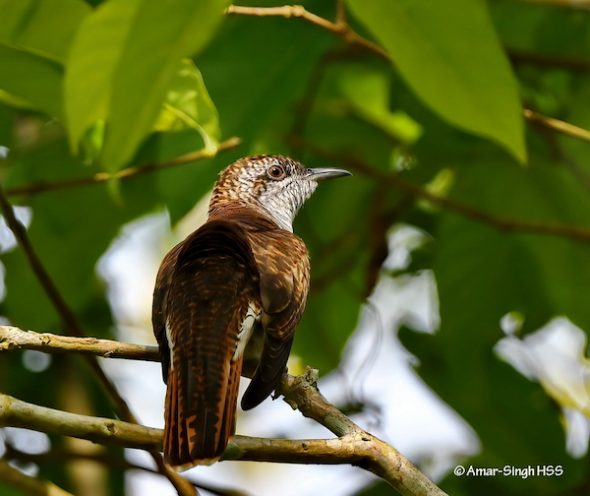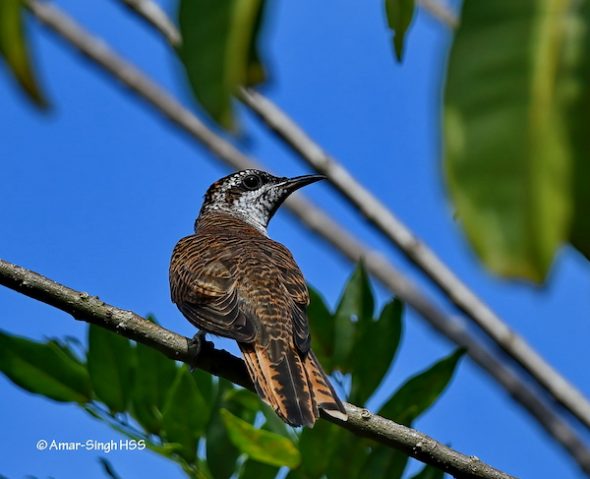I saw 2 Banded Bay Cuckoos (Cacomantis sonneratii malayanusbirds) together today, foraging and calling together; this was unexpected.

Both look like adults. It was also interesting to note the white at the side of the tail, proximally that that showed up well in one bird (above, first bird) (do not see this mentioned in the literature).

I presume it is not seen (above, second bird) unless the wings are held out/down.

Cuckoos of the world uses ‘Cacomantis sonneratii sonneratii’.

Amar-Singh HSS (Dato’ Dr) – Ipoh, Perak, Malaysia
Location: Perak, Malaysia
Habitat: Secondary growth adjacent to limestone outcroppings
Date: 10th December 2020
Equipment: Nikon D500 SLR with Nikon AF-S Nikkor 500mm f/5.6E PF ED VR, handheld with Rode VideoMic Pro Plus Shotgun Microphone








